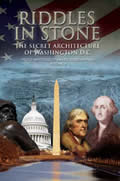PART 3-B
By
Servando Gonzalez
October 17, 2014
NewsWithViews.com
More Questions Than Answers
Some professional disinformation specialists have conspired to make us believe that, with regard to the missile crisis, all has been said and explained. The first book about the missile crisis was written by CFR agent Elie Abel. Then Graham T. Allison (CFR), wrote Essence of Decision, a book that most people still consider the ultimate analysis of the decision-making process during the crisis.
According to Allison, the Soviet failure to camouflage the missiles may have had a simple answer: stupid bureaucratic procedures in the Soviet Army. Missile sites had never been camouflaged in the Soviet Union, so the construction crews at the sites did what they usually do: build the missile sites according to the installation manuals because somebody forgot to retrain them before they went to work on this mission.
But, knowing the operational procedures of the Soviet Army this explanation seems a bit too simplistic to be credible. First of all, the officers and enlisted men assigned to the job of missile emplacement are normally not common soldiers, but specially trained personnel. Secondly, even with the existence of stupid bureaucratic procedures common to all armies, it is difficult to believe that they had made such a gross mistake, particularly if they were trying to place the missiles in Cuba using deception and stealth as the American official version claimed. Finally, Allison contradicts himself when, just two paragraphs before advancing his theory, he mentions that “The clandestine manner in which the missiles were shipped, unloaded, and transported to construction sites reveals the hand of Soviet intelligence agencies. Secrecy is their standard operating procedure.”
Talking to journalists at a news conference on February 1963, CFR agent Robert McNamara mentioned the so-called “photographic gap” that occurred between September 5 and October 14. According to McNamara, the U-2 missions during that period “didn’t relate” to the areas where the Russian missiles were eventually found. That was short of a tacit admission that the CIA had failed to photograph the western half of the Island — the area where all evidence pointed that the missiles were most likely to be — during the six weeks preceding the flight that allegedly discovered the strategic missile bases.
Those who needed to know had been assured that any missile emplacements would have been discovered by the U-2 reconnaissance flights over Cuba. But they were not told that these flights were bypassing the important areas allegedly to avoid antiaircraft batteries or SAMs already installed by the Soviets. But, after being ordered to fly over the suspect areas in Cuba, early in October the U-2 flights were inexplicably canceled.
After the crisis, the White House justified this decision by saying that Hurricane Ella had prevented air surveillance, but we know that Ella did not form until October 16. Even before the crisis was over, suspicions arose that the U-2 flights over Cuba had not been scheduled in an optimal manner. Later, in early 1963, the Stennis Committee examined the possibility of a “photographic gap” in U-2 coverage of Cuba in detail, but the charges were rejected as “unfounded.” However, the Stennis Report curiously ignored the critical questions of the U-2 paths over the Island between September 5 and October 24, merely observing that these flights “completed the coverage of those areas of Cuba which had been spotlighted as required early attention.” Yet, during cross examination by Congressmen Minshall and Ford in early February, 1963, Defense Secretary McNamara (CFR) admitted to the “photographic gap” of some 38 days in U-2 coverage of western Cuba.
Though in his book Collision Course author Henry Pachter makes no reference to the “photographic gap,” but he somewhat admits its existence in references to vague hints by administration sources that, because of the threat of Soviet SAM antiaircraft missiles in Cuba, reconnaissance flights during September had been limited to “side ways approaches.” In the same fashion, Roger Hilsman’s (CFR) in a 1964 article on the missile crisis gives no further explanation or of the “photographic gap.”
Even more significantly, in his now-classic study of the alleged failures in national intelligence estimates, author Klaus Knorr (CFR) didn’t mention the “photographic gap” or even the role played by the U-2 in the intelligence gathering during the crisis. Some years later Theodore Sorensen (CFR) remarked that U-2 incidents elsewhere in the world led to a “high-level reexamination of that airplane’s use” over Cuba and “some delay in flights,” but gave no additional information. Later in 1965 Roberta Wohlstetter (CFR) suggested that the Kennedy administration knew the Soviets had operational SAM sites in western Cuba, so they may have been extremely cautious in scheduling U-2 flights over the Island for fear of losing a plane.
Elie Abel (CFR) and Roger Hilsman (CFR) made additional disclosures concerning a change in policy concerning U-2 flights over Cuba. Not even Graham T. Allison (CFR) gave a clear explanation for the failure of U.S. intelligence, due to a “photographic gap,” to discover the missiles earlier.
Therefore, the fact remains that on September 10 a high-level decision was made and express orders were given, prohibiting direct overflights of western Cuba —the part of the Island where all evidence pointed to the presence of strategic missile sites. This unexplainable decision led to the now-famous “photographic gap.”
In 1991, however, CIA photo interpreter Dino Brugioni offered a much more credible explanation in his book Eyeball to Eyeball: The Inside Story of the Cuban Missile Crisis: According to Brugioni, It was not hurricane Ella that kept the U-2 from flying over the western part of Cuba, “but rather the dereliction, bumbling, and intransigence of [Secretary of State Dean] Rusk (CFR) and [Assistant to the President for National Security Affairs McGeorge] Bundy (CFR).” “Because of Bundy’s and Rusk’s stalling actions, there had been no U-2 photos of Cuba for over two weeks.”
As expected, Foreign Affairs, the CFR conspirators’ main disinformation organ, has published on some articles basically centered on the “lessons” of the Cuban missile crisis and its applicability to future crises. Now, given the fact that the “lessons” are based on the CFR conspirators’ false narrative of the events, one has to conclude that these “lessons” are wrong.
Nevertheless, the fact remains that, 50 years later, none of the above questions I have asked above have been satisfactorily answered. Moreover, I believe that the CFR professional disinformers will never provide a coherent answer to these questions because the answers will show us a very different picture than the one they are still trying hard to make us believe.
Finally, why did President Kennedy fail to seize the opportunity to get rid of his supposed archenemy? Why he didn’t authorize the U.S. Navy to board the Soviets ships allegedly bringing out of Cuba the missiles and their nuclear warheads, and verify it? Did Kennedy know something we don’t? These are the real questions to be answered in order to solve this historical riddle called the Cuban missile crisis.
Moreover, a logical question comes to mind: Why do these professional disinformers, most of them CFR members, spend so much time and effort muddying the historical waters? The answer is relatively simple: because, true to the Orwellian principle that he who controls the past controls the present and the future, giving credibility to false past fears such as the Cold War, the CFR disinformers can lend credence to current false fears such as the War on Terror.
Nevertheless, my theory about the Cuban missile crisis is that Khrushchev’s purpose was two-fold: first, getting rid of the troublesome Fidel without being blamed for it himself. Secondly, placing Americans in a very difficult position before the world and their own consciences, after an attack by the U.S., a big and powerful nation, against such a small country as Cuba. Even more important, the eventual discovery after an American invasion that there were no nuclear warheads in Cuba, and that the missiles were actually dummies, would have left the Americans with egg smeared all over their faces, instantly making them the laughingstock of the whole world.
An American invasion of Cuba could have solved Khrushchev’s Fidelista problem and, making good use of the American discredit on his behalf, he would have inherited Fidelismo, but without the troublesome Fidel — exactly the same way that, some years later, Fidel himself got rid of Che Guevara and inherited Guevarismo without the troublesome Guevara. Unfortunately, Khrushchev did not get rid of Castro, but David Rockefeller got rid of Khrushchev less than two years after the crisis.
|
|
In 1964 David visited the Soviet Union and had a two and half hour conversation with the Soviet Premier. We don’t know what the subject of subject of the conversation was, but we may safely surmise that David dressed down Khrushchev for his unauthorized attempt to get rid of David’s secret agent Fidel Castro. Barely two months later, David’s secret agents in the Soviet Politburo deposed Khrushchev.
Explaining my theory in detail, however, would take too long and is beyond the scope of this article. To understand it you may have to read my book The Nuclear Deception: Nikita Khrushchev and the Cuban Missile Crisis.
Click here for part -----> 1, 2, 3a, 3b,
� 2014 Servando Gonzalez - All Rights Reserved
Servando Gonzalez, is a Cuban-born American writer, historian, semiologist and intelligence analyst. He has written books, essays and articles on Latin American history, intelligence, espionage, and semiotics. Servando is the author of Historia herética de la revolución fidelista, Observando, The Secret Fidel Castro: Deconstructing the Symbol, The Nuclear Deception: Nikita Khrushchev and the Cuban Missile Crisis and La madre de todas las conspiraciones: Una novela de ideas subversivas, all available at Amazon.com.
He also hosted the documentaries Treason in America: The Council on Foreign Relations and Partners in Treason: The CFR-CIA-Castro Connection, produced by Xzault Media Group of San Leandro, California, both available at the author's site at http://www.servandogonzalez.org.
His book, Psychological Warfare and the New World Order: The Secret War Against the American People is available at Amazon.com. Or download a .pdf copy of the book you can read on your computer, iPad, Nook, Kindle or any other tablet. His book, OBAMANIA: The New Puppet and His Masters, is available at Amazon.com. Servando's book (in Spanish) La CIA, Fidel Castro, el Bogotazo y el Nuevo Orden Mundial, is available at Amazon.com and other bookstores online.
His most recent book, I Dare Call It treason: The Council on Foreign Relations and the Betrayal of the America, just appeared and is available at Amazon.com and other bookstores online.
Servando's two most recent books in digital versions only are The Swastika and the Nazis: A Study of the Misuse of the Swastika by the Nazis and the first issue of the political satire series OBSERVANDO: American Inventors.
Website: www.servandogonzalez.org
E-Mail: servandoglez05(at)yahoo(dot)com



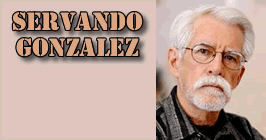

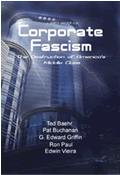
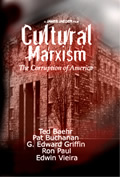
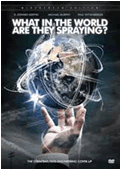
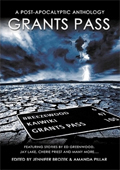




 Share
This Article
Share
This Article
